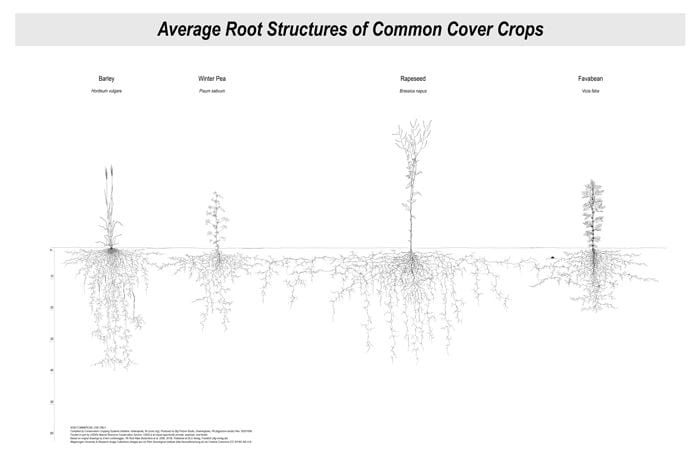
The Conservation Cropping Systems Initiative developed detailed drawings of roots on common cover crops. Non-commercial users can download high-quality files at ccsin.org/root-project.
This excerpt is from The Furrow, a John Deere Publication:
by Dean Houghton
There’s more to cover crops than meets the eye—in fact there may be much more. The ‘hidden half’ of a cover crop is the root system—a major contributor to the soil health benefits of cover cropping that is always out of sight and therefore often out of mind.
“Almost everything that we know about the growth of cover crops is from measuring the above ground parts of the plants and yet much of the benefit from cover crops comes from the roots,” says Jason Kaye, professor of biogeochemistry at Penn State University.
“You want a root system that explores all corners of the soil using coarse roots that grow vertically to reach deep and fine roots that grow horizontally and spread out at shallow depths,” says Joseph Amsili, extension associate with the Cornell Soil Health Laboratory. Prior to joining Cornell’s Soil Health Team, Amsili worked with Jason Kaye at Penn State where his research focused on comparing cover crop root systems and tracing the organic carbon released from roots into the soil.
Continue reading on The Furrow